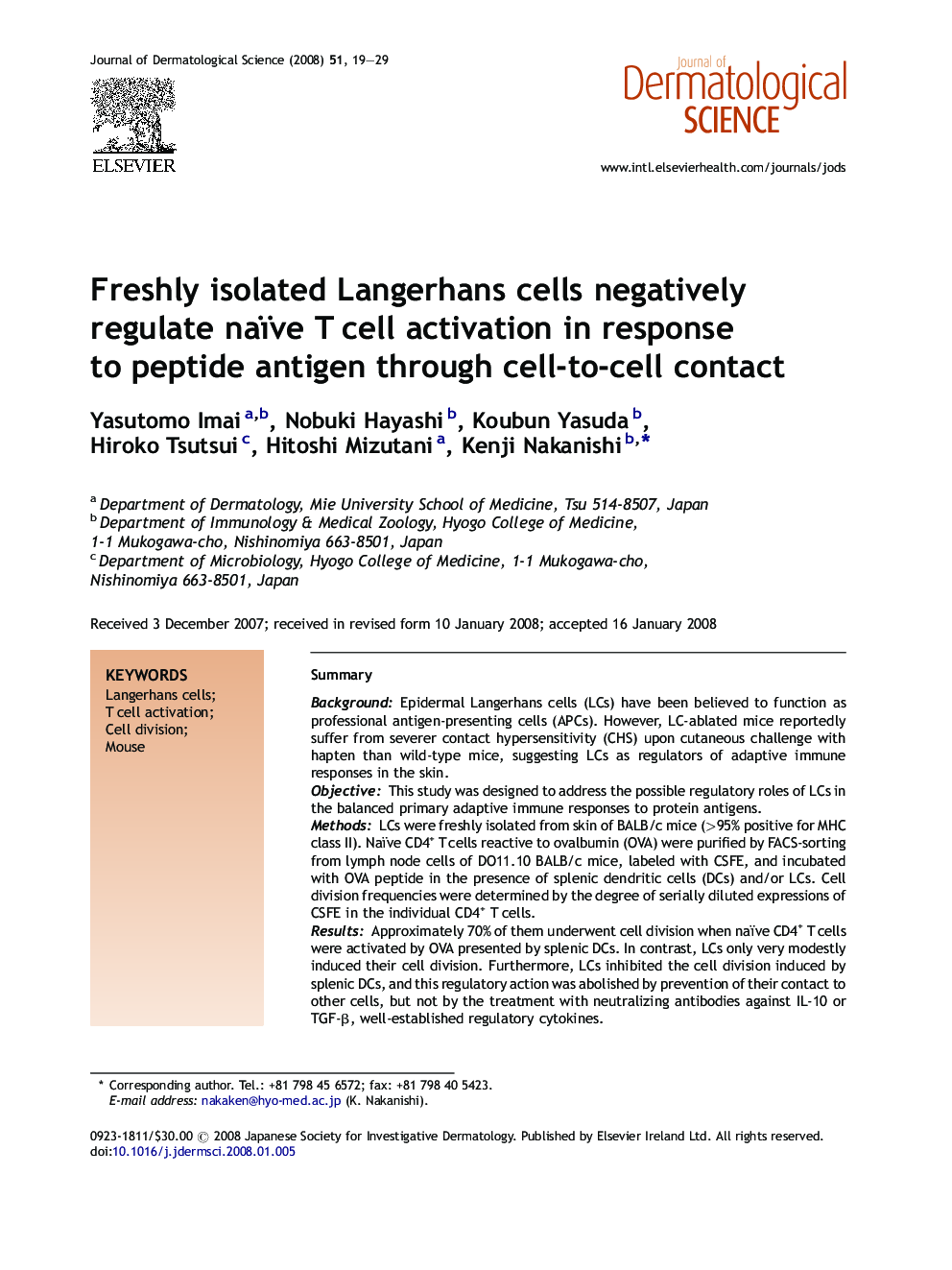| Article ID | Journal | Published Year | Pages | File Type |
|---|---|---|---|---|
| 3214161 | Journal of Dermatological Science | 2008 | 11 Pages |
SummaryBackgroundEpidermal Langerhans cells (LCs) have been believed to function as professional antigen-presenting cells (APCs). However, LC-ablated mice reportedly suffer from severer contact hypersensitivity (CHS) upon cutaneous challenge with hapten than wild-type mice, suggesting LCs as regulators of adaptive immune responses in the skin.ObjectiveThis study was designed to address the possible regulatory roles of LCs in the balanced primary adaptive immune responses to protein antigens.MethodsLCs were freshly isolated from skin of BALB/c mice (>95% positive for MHC class II). Naïve CD4+ T cells reactive to ovalbumin (OVA) were purified by FACS-sorting from lymph node cells of DO11.10 BALB/c mice, labeled with CSFE, and incubated with OVA peptide in the presence of splenic dendritic cells (DCs) and/or LCs. Cell division frequencies were determined by the degree of serially diluted expressions of CSFE in the individual CD4+ T cells.ResultsApproximately 70% of them underwent cell division when naïve CD4+ T cells were activated by OVA presented by splenic DCs. In contrast, LCs only very modestly induced their cell division. Furthermore, LCs inhibited the cell division induced by splenic DCs, and this regulatory action was abolished by prevention of their contact to other cells, but not by the treatment with neutralizing antibodies against IL-10 or TGF-β, well-established regulatory cytokines.ConclusionLCs negatively regulate the primary adaptive T cell response, presumably allowing well-controlled immune response in the skin.
